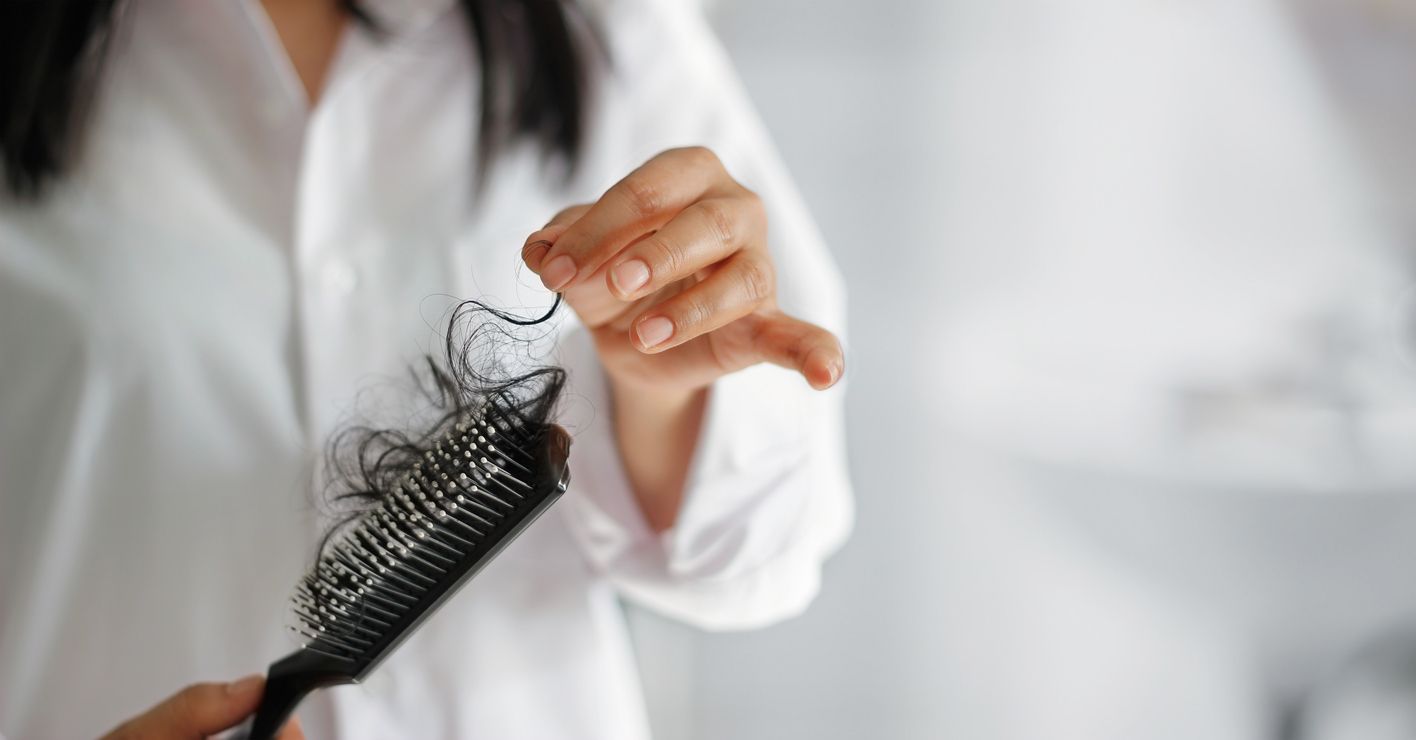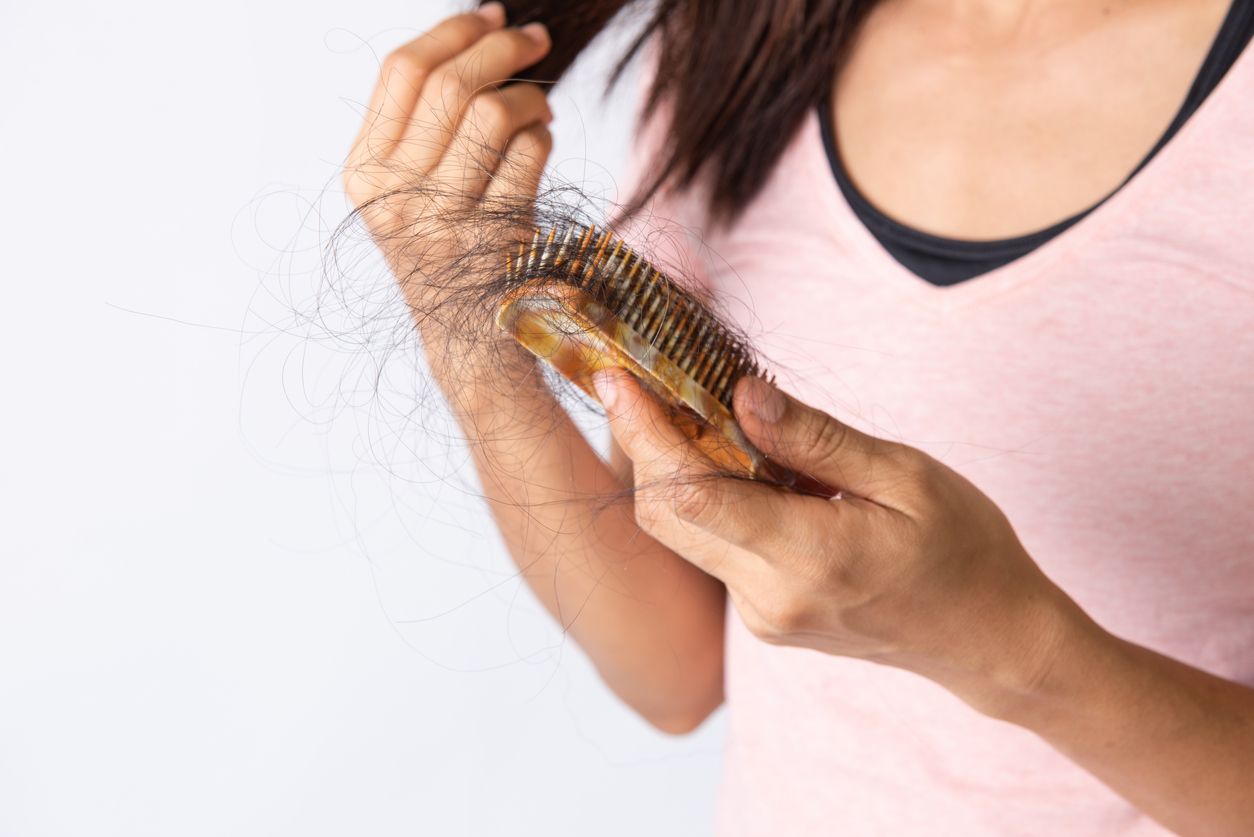- Home
- Trend
- Weight Loss Strategies
- Acne Tips
- Hair Health Information
- Blemish Removal Tips
- Acne Scar Removal Tips
- Muscle Building Techniques
- Intimate Care Tips
- Postpartum Intimate Care
- Eye Bags Wiki
- Tips for Face Slimming
- Secret of Permanent Hair Removal
- Breast Enlargement Tips
- Cure to Snoring
- Marionette Lines
- Skin-Tightening Secrets
Looking for a doctor to treat female hair loss but don’t know where to start? Hair loss has increasingly become a modern issue for women, and even small everyday habits can be unexpected triggers. This makes female hair loss harder to manage and even harder to cure! In this article, we’ll break down the 5 major causes of female hair loss, what to look out for when choosing a dermatologist, and how to manage hair loss effectively to ease the appearance-related anxiety that comes with it.
Causes of Female Hair Loss: These 5 Factors Shouldn’t Be Ignored

1. Genetic Factors
Genetics is one of the most common causes of hair loss. Androgenetic alopecia isn’t just a men’s issue—women who inherit the hair loss gene can also experience similar symptoms if their levels of dihydrotestosterone (DHT) are too high. DHT causes hair follicles to shrink and, in some cases, close off completely, leading to thinner, shorter hair that eventually stops growing.
2. Hormonal Changes
Hormonal fluctuations—such as those experienced after childbirth or during menopause—often trigger hair loss in women. When androgen levels surpass estrogen levels, it throws off hormonal balance, pushing large amounts of hair into the resting phase, which results in temporary hair loss. In older age and during menopause, estrogen levels drop significantly, affecting hair growth and leading to visibly thinner hair.
3. Work Stress and Lifestyle Habits
Busy work schedules and high-stress environments increase the release of stress hormones, which disrupt the hair growth cycle and lead to stress-induced hair loss. Poor lifestyle habits like staying up late and having an unbalanced diet also negatively impact hair health.
4. Nutritional Deficiencies
Hair needs proper nutrition to grow. Lacking certain nutrients—like iron, zinc, or biotin—can make hair brittle, weak, and prone to falling out.
5. Illnesses and Medications
Certain diseases such as thyroid disorders or autoimmune conditions like lupus can trigger severe hair loss. Some medications, including chemotherapy drugs or anticoagulants, may also lead to sudden hair shedding.
4 Common Types of Female Hair Loss: Look Out for These Warning Signs

• Receding Hairline: The hairline gradually moves back, especially around the temples, creating a larger forehead—a condition also known as “M-shaped hairline.”
• Thinning at the Crown: Hair becomes sparse at the crown, making the scalp increasingly visible.
• Finer Hair Texture: Hair becomes softer, thinner in diameter, and more prone to breakage.
• Alopecia Areata: This autoimmune condition causes localized hair loss in round or oval patches. It’s a common form of hair loss in women, especially among lupus patients.
免費體驗
F8 Hair Regrowth Treatment
1 Minute Self-Registration
Date should not be before minimal date
How to Choose the Right Female Hair Loss Doctor: 4 Expert Tips to Avoid Mistakes
1. Doctor’s Credentials and Background
• Dermatologist vs. Trichologist: Dermatologists can diagnose and treat various skin and scalp conditions, while trichologists specialize specifically in hair and scalp health and may have deeper expertise in hair loss.
• Verify Medical Licensing and Certifications: Ensure the doctor is a licensed medical practitioner with appropriate qualifications, such as registration with the Medical Council of Hong Kong.
2. Doctor’s Experience and Reputation
• Ask About Past Cases and Success Rates: Consult the dermatologist about their experience treating male and female hair loss, and get a sense of their success rates.
• Check Online Reviews and Testimonials: Research patient feedback and recommendations to better understand their treatment quality and patient satisfaction.
3. Clinic’s Equipment and Technology
• Advanced Scalp Diagnostic Tools (e.g., Follicle Microscopes): These tools allow for more accurate evaluation of scalp and follicle health.
• Variety of Treatment Options (Medications, Lasers, Hair Transplants): A good clinic should offer a wide range of treatment plans tailored to individual needs.
4. Importance of the First Consultation
• Open Communication for Diagnosis and Treatment Plan: Use the first consultation to communicate thoroughly, understand the doctor’s diagnostic approach, and clarify your questions.
• Ask About Cost and Expected Results: Know what to expect in terms of pricing and outcomes to make an informed decision.
Two Popular Female Hair Loss Treatments: Minoxidil and Oral Medications
1. Medication-Based Treatments
• Minoxidil: A topical solution that improves blood circulation in the scalp and extends the hair growth phase. Apply it directly to the scalp twice daily. Possible side effects include scalp irritation and initial shedding.
• Finasteride: An oral medication commonly used for male pattern baldness. In select cases, it may be prescribed to women, but only after thorough risk assessment.
• Spironolactone: A diuretic with anti-androgen properties that can help women with hormone-related hair loss.
• Other Medications: Such as oral contraceptives or corticosteroids, may be used in certain situations depending on the cause of hair loss.
2. Hair Transplant Surgery
• Suitable Cases, Procedure & Aftercare: Transplants are typically used for androgenetic alopecia. The procedure involves harvesting hair follicles, implanting them in bald areas, and requires careful post-op care to prevent infection and ensure results.
Prevention is Better Than Cure
Aside from medical treatments, lifestyle adjustments can help improve hair health and prevent further hair loss. Here’s how:
A. Proper Hair Washing and Care
Use Gentle Shampoos and Avoid Over-Cleansing: Choose non-irritating shampoos to protect your scalp. One brand worth researching is MD, founded by U.S. medical doctor Susan F. Lin, which offers a range of anti-hair loss products.
Condition Hair to Prevent Breakage: Conditioners help nourish and strengthen hair to prevent breakage.
Limit Hair Coloring and Styling: Chemical treatments like dyeing and perming damage the hair shaft, so minimize their frequency.
B. Regular Scalp Massages
Stimulate Blood Flow and Hair Follicles: Gently massage the scalp using your fingertips to boost circulation and stimulate hair growth.
C. Healthy Diet and Lifestyle
Eat Balanced Meals, Sleep Well, Exercise Moderately: These habits contribute to overall health, including hair vitality. Ensure sufficient intake of hair-friendly nutrients like vitamins A, B-complex, C, D, E, protein, and minerals through both supplements and your daily meals.
免費體驗
F8 Hair Regrowth Treatment
1 Minute Self-Registration
Date should not be before minimal date
Don’t Want to See a Doctor or Worry About Medication Side Effects? Perfect Medical F8 Hair Regrowth Treatment Is Your Best Bet!
You don’t need to visit a dermatologist or trichologist to address your hair loss. Regardless of severity, the Perfect Medical F8 Hair Regrowth Treatment can help you regain hair health and volume with zero downtime. This treatment uses low-level medical-grade soft lasers to penetrate the scalp and reactivate dormant hair follicles, pushing them back into the active growth phase—resulting in stronger, healthier hair.
Whether you're dealing with alopecia areata, a receding hairline, telogen effluvium, seborrheic hair loss, postpartum hair loss, or stress-related hair shedding, sign up now to enjoy: Professional Scalp Analysis + Perfect Medical F8 Hair Regrowth Treatment!
Free Trial: Perfect Medical F8 Hair Regrowth Treatment免費體驗
F8 Hair Regrowth Treatment
1 Minute Self-Registration
Date should not be before minimal date
FAQ

Why does hair enter the resting phase?
The resting (telogen) phase is a natural part of the hair cycle that prepares hair for new growth. However, if follicles stay in this phase for too long, they shrink and close, making regrowth difficult.
Why is female hair loss becoming more common in Hong Kong?
Hong Kong’s high-stress lifestyle and hormonal imbalances—such as elevated androgen and stress hormone levels—lead to androgenic hair loss when these exceed estrogen levels.
What is alopecia areata?
Alopecia areata, also known as spot baldness, involves irregular, round-shaped bald patches caused by the immune system attacking hair follicles.
Is hair loss only a male issue?
Absolutely not. Anyone with high levels of androgens can experience DHT-induced follicle shrinkage, including women.
What are the common signs of hair loss?
Receding hairline, thinning at the crown, and finer hair strands are some of the most common symptoms.









